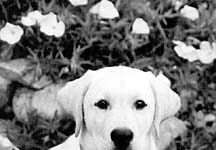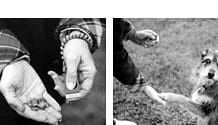Home Search
allergies/feed/rss2/Rawhide%20chews%20are%20potentially%20dangerous%20because%20they%20can%20be%20a%20choking%20hazard%20or%20cause%20gastrointestinal%20obstructions%20if%20your%20dog%20manages%20to%20chew%20off%20a%20piece%20that%20is%20small%20enough%20to%20swallow,%20but%20too%20large%20to%20pass%20unimpeded.%20In%20addition,%20some%20rawhide%20chews%20are%20hard%20enough%20to%20break%20or%20damage%20teeth. - search results
If you're not happy with the results, please do another search
Canine Counselor
says Frost. This unconditional acceptance that dogs extend to us is one of the nicest perks that this special relationship offers us.
Another benefit we gain from our dogs is a sense of expansiveness and ease. People tend to be more open around animals, and dogs in particular. Frost notes, We are often more open
Best Nail Clippers For Your Dog
It’s really a safe and simple procedure; one that most dog owners can easily learn to perform on their dogs. I have done it to my own dogs since I was a little kid. So it never ceases to amaze me when I ask my training classes how many owners clip their own dogs’ toenails and an average of only one out of eight raise their hands. That means the other seven either neglect this important procedure, or spend hundreds of dollars over a dog’s lifetime to pay someone else to do it.
Preparing For and Training Young Puppies
The first time I saw Buddy he was a tiny tan morsel nestled in his owner's arms, a perfect pudge of a yellow Labrador retriever puppy eight weeks old, fat, round and chunky with a shiny black button nose, warm brown eyes and milk-sweet puppy breath. His owner, Tena, had carried him into my training class to hand him over to me for three weeks of in-home boarding and training.
Crate Training Made Easy
The crate is a sturdy plastic, fiberglass, wood, metal or wire box just big enough for a dog to stand up, turn around and lie down in comfortably. It can be used with the door open, at your convenience, or with the door closed, when mandatory confinement is called for. When the crate is properly introduced using positive training methods, most dogs love their crates. Canines are den animals and a crate is a modern den a dog's personal portable bedroom that he can retire to when he wants to escape from the trials and tribulations of toddlers and other torments. He can take it with him when he stays at boarding kennels, and when he travels with you and sleeps in hotels and motels.
Clicker Training and Trick Training Your Dog
one
can shape a new trick."
can shape a new trick."
Tail-Wagging Training
Training, says Massachusetts dog trainer Donna Duford, should be fun, not work. Her seminars are such upbeat, tail-wagging events that the dogs seem to be having a party. Look closer and you’ll see a serious class, with participants taking notes as Duford reviews the laws of learning and defines classical conditioning, operant conditioning, positive and negative reinforcement, positive and negative punishment, continuous and variable reinforcement schedules, and other fundamentals of behavioral training.
Much Ado About Muzzles
Let’s be clear about one thing right from the start. A muzzle won’t train your dog. It will not teach your dog to stop biting or chewing, nor will it teach him to love small children, tall men with beards, hats and umbrellas, or your veterinarian. A muzzle is a behavior management tool, properly used as a temporary measure to protect humans (or other dogs) when dogs have to be handled in situations that are too stressful for them to tolerate. A muzzle is also a flashing neon warning sign that it’s time to do some serious counter-conditioning and desensitization so the dog in question can be handled in normal situations without resorting to muzzling.
Teaching Your Puppy Critical Social Skills
If you are ever in California, you might want to make it a point to visit Carmel Beach, at the end of Ocean Avenue in Carmel Village, Monterey County. Carmel Beach is a canine utopia. Dogs are allowed, even encouraged, to run off-leash along a breathtaking Pacific Ocean backdrop. On any given day, at any given time, you’ll see Golden Retrievers racing along the sand after tennis balls, Labradors fetching sticks from the surf, Border Collies herding shorebirds, and any and all varieties of mixed-breeds and purebreds romping together in happy groups. Rarely, if ever, does a fight happen. Oh, an occasional brief scuffle maybe, as two ball-obsessed Aussies squabble over possession rights. But it’s hardly ever serious.
Trying To Ease Your Dog’s Stress
Stress. Everyone knows what it feels like. Tight shoulders. Headache. Insomnia. Upset stomach. Everyone knows what can trigger it. Rush hour traffic. Deadlines. An insensitive boss. A toddler having a day of tantrums, unexpected bills, or taxes. We also know that too much stress can actually make us ill. Ulcers and high blood pressure are prime examples. A recent study noted that 19 percent of employees who call in sick on any particular day do so because they simply felt they needed a day off.
Dog Stung By A Bee? Here’s How to Treat It
Hives, wheals, and welts are a moderate reaction to stings. Just like their human counterparts, dogs who have been stung can break out in unsightly hives. These are usually very itchy and uncomfortable. The first sign often noticed is the dog rubbing along furniture or scratching at the face and eyes. The hives may manifest as bright red streaks or lumps all over the body or be confined to a single place.
What is Mange in Dogs?
There may be no other canine malady that seems to inspire as much misinformation as canine mange." Internet searches often return pages that blame it on lice (wrong) as often as mites (right). Ask an older person about it and he may tell you to use a dangerous and ineffective treatment such as dousing the poor dog in used motor oil (a great way to sicken or even kill the dog). But the condition isn't a mystery
Treating Your Dog’s Corns and Warts
Corns and plantar warts may be common on human feet, but they’re rare in dogs – unless the dog is a Greyhound. This breed is prone to corns. Corns are keratin calluses on the front center paw pads, such as under the second toe bone, which lacks subcutaneous tissue or padding. A common treatment for corns is their removal with a small curette or scalpel, followed by smoothing with a pumice stone and the application of salicylic acid pads or ointments. Roberta Mikkelsen of Pearl River, New York, hoped that hulling (surgical removal) would help her Greyhound, Chip, recover from his painful corns. “This is such a common problem in the breed,” she says, “that there is an online forum where people list the things that did or didn’t help. So far there isn’t a cure.” After Chip’s corn was removed, it grew back.









